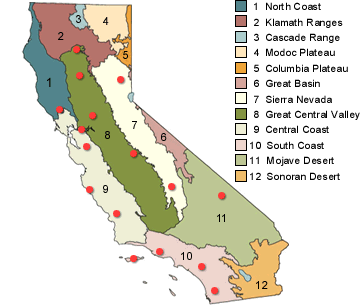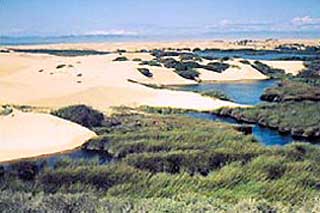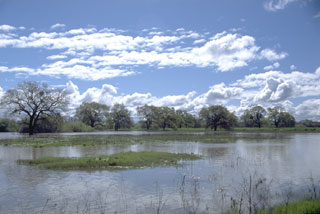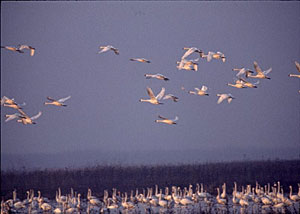|
The Nature Conservancy has taken the direct path to
preservation by purchasing endangered habitats and unusual
environments that can't wait for the bureaucratic process
or, in some cases, enlightenment. They steward the land,
protecting and restoring its original ecosystem until there
is a public program or policy in place to assume the
mission.
Their sense of environmental urgency has been fortunate for
the world. But being ahead of your time is also one of the
most interesting public relations challenges. In the Central
Sierras where I lived in the foothills between Yosemite and
Kings Canyon, for instance, the general populace mistrusted
TNC and feared if anyone knew that there was still
pennyroyal thistle growing in the region, your own land
rights were at risk. It was not the case, of course, but TNC
was aware of the misconceptions.
California's Nature Conservancy Preserves

We worked with the communications team in San Francisco and
Washington, D.C. to pilot a public education program
highlighting the purpose of each major preserve. A book was
already on the market identifying these and inviting hikers
and nature lovers to come explore the preserves, so the
second stage was a strategic extension of the message with
interpretative signage onsite.
Georgia Hodges, who was membership coordinator then, and I
researched the available outdoor signage materials for
durability and eco-friendly components, and while she
arranged for custom constructed pedestals and worked with
the local stewards to determine best placements, I designed
the layouts and feature content. It didn't stop there, with
desk jobs. Georgia pulled the team together one last time
outside a warehouse in the city and we hand-glued the signs
to their metal pedestals. I really wanted to go along with
the installation team heading out onto the backroads the
next day, but I had a little North Beach office to keep
afloat and a couple of kids who were beginning to think
their family mealtimes were what was really endangered.
Perhaps the most spectacular of all the preserves is Santa
Cruz Island, the largest of the Channel Islands off the
Santa Barbara coast. Often referred to as the
"Galapagos of North America," these lands have
been relatively untouched. Of the thousands of species at
home there, the poster child is definitely the Island Kit
Fox, a kitten-sized creature under seige.
Read more about The Nature Conservancy's vision and
history
and get out into the wild again one of these weekends
yourself.
|




